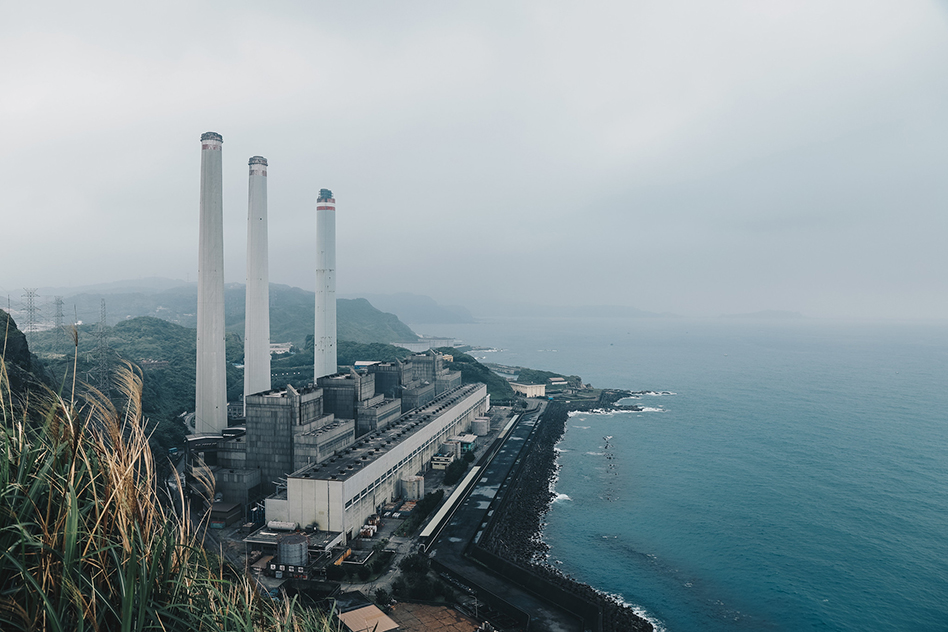
As the Paris Agreement nears the four-year mark and signatories prepare to account for progress to date on national pledges to reduce climate-warming greenhouse gas (GHG) emissions, it’s important to note that some countries have a much heavier lift than others. A case in point is Taiwan, where more than 95 percent of the total energy supply comes from fossil fuels, nearly all of which are imported.
Fulfilling its Nationally Defined Contribution (NDC) to the Paris Agreement—to reduce its greenhouse gas emissions by 50% from the business-as-usual level (428 metric tons of carbon dioxide-equivalent emissions) by 2030—may impact Taiwan’s economy due to its heavy dependence not only on imported carbon-intensive energy sources but also on international trade. The combined effect of nearly 200 other countries’ efforts to fulfill their NDCs could alter Taiwan’s trading channels and costs, and hence its domestic economic performance. To assess the overall potential impact of the Paris Agreement on the island nation’s economy therefore requires a modeling framework that takes into account the economic effects of both domestic and international GHG reduction policies.
Overcoming the limitations of previous studies of Taiwan’s economy based on a single-country modeling framework, researchers at the MIT Joint Program on the Science and Policy of Global Change have developed and applied a global, economy-wide, computable general equilibrium (CGE) model with energy use and emissions details where Taiwan is explicitly represented. The MIT model, which provides global coverage and explicit modeling for international trade, can simulate the economic effects of foreign policies including the Paris Agreement.
In a study appearing in Climate Change Economics, the researchers compared the impact on Taiwan’s economy of the Paris Agreement under two scenarios—one in which Taiwan fulfills its NDC unilaterally, the other in which Taiwan does so in the context of a global effort. The study also considered the impact on Taiwan’s economy of a third scenario in which the U.S., which recently set in motion its withdrawal from the international climate accord, partially achieves its NDC through state-level efforts.
Applying their model—the Economic Projection and Policy Analysis (EPPA)-Taiwan, a version of the MIT EPPA model developed jointly by the Institute of Nuclear Energy Research (INER) of Taiwan and the MIT Joint Program—the researchers found that under the current NDCs of the Paris Agreement, Taiwan’s economy fares better under a global policy than it would by acting alone. That’s because the global policy would substantially lower prices of the fossil fuels it imports to meet most of its domestic energy needs.
The model shows, however, that as NDCs become more stringent in coming decades, foreign climate mitigation policies could adversely impact Taiwan’s economy, which would depend less and less on fossil fuels and see declining demand for its exports with each passing year. The finding validates the study’s holistic approach of accounting for the country-level economic impacts of both domestic and foreign policy, particularly for countries that depend heavily on international trade.
Finally, the researchers found in the case where the U.S. fulfills only half of its NDC through state-level efforts, the negative impact on Taiwan’s economy is minimal. But they caution that if other countries follow the lead of the U.S. and back out of the Paris Agreement, this impact would become more significant due to higher fossil fuel demand and prices.
“This research shows that using a modeling framework with global coverage can reveal significant economic impacts of international trade on domestic economies, especially those that depend heavily on international trade and imported energy sources,” says Henry Chen, supervising co-author of the study and a research scientist at the Joint Program.
The study was funded by Taiwan’s National Energy Program-Phase II and Atomic Energy Council.
Photo: Hsieh-ho Power Plant, an oil-powered power plant in Taiwan (Source: Flickr/ waychen_c)

